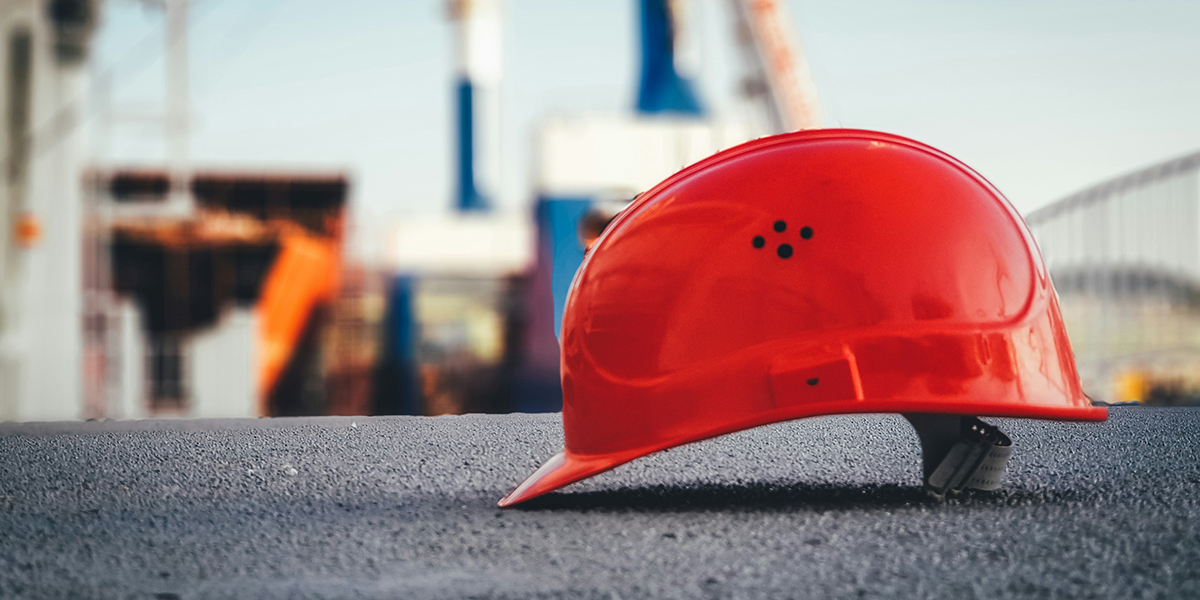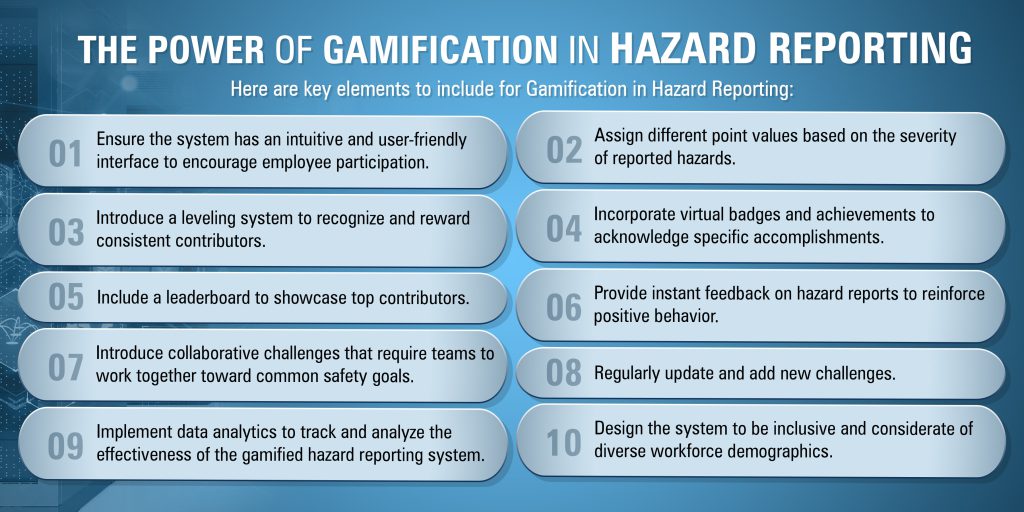The Power of Gamification in Hazard Reporting

There will be seldom people who do not enjoy the games time in school. It was the most looked forward to time. And it is still today!
The human mind and body are processed to age, develop, and grow, but one of the things that remains consistent is the love for games! And we are not only talking about the new-age video games; any activity turned into a game becomes more fun.
In fact, we even have some numbers listed here.
- In a survey, 78% say that a gamified recruiting process makes them more eager to work for the company providing the training.
- Another survey states that 85% of employees show more engagement when gamification solutions are applied in their workplace training programs.
Did you see the number? It’s whooping 85%!!
Well, that says it all. No matter the age or occasion, gamification notches up education, training, recruitment, and everything else.
Now, what if we include gamification techniques for safety training?
Let us narrow down the subject and talk exclusively about hazard reporting.
We know that hazard reporting is a process of identifying, documenting, and communicating the potential risks/dangers in a workplace. Hazard Reporting aims to proactively address risks/challenges and reduce them to escalate workplace safety.
This process often relies on the collaboration of employees to contribute to a collective effort in identifying and managing potential hazards.
So, what happens when we merge gamification and hazard reporting?
To get to the bottom of the pit, we must first dig into how gamification taps into human behavior.
The Psychology Behind Gamification
To put it in simple words, whenever a person
- Wins one level in a game, they achieve a particular sense of achievement.
- Plays a particular game, they concentrate 100% only on the game.
- Plays in a team, they display an excellent level of team play.
- Gets feedback after the game, they accept it gracefully.
Gamification leverages human psychology to tap into behaviors, motivations, and social dynamics, making it a powerful tool for building a safety culture within organizations.
Gamification helps to;
- Align with desire for achievement, recognition, and personal development.
- Introduce friendly competition through leaderboards.
- Reinforce positive behaviors and correct negative ones.
- Repeat desirable behaviors.
- Have a continuous learning curve.
Thus, gamification becomes a catalyst for building an organization’s safety culture. It transforms safety practices into an engaging part of the organizational ethos, ultimately contributing to a safer and more proactive work environment.
Gamification in Hazard Reporting
How would gamification in Hazard reporting work?
Well, given an example, the safety officers introduce a virtual safety adventure. Employees would have to embark on this adventure, earn points for reporting hazards, and eventually jump to higher levels.
They could also receive virtual badges and certificates after achieving certain milestones.
The gamified system improves reporting rates and enhances overall safety awareness and engagement. And the safety officers know the understanding levels of each employee to provide them with the required training. With improvisation in the games’ scoring card, the organization can understand that hazard reporting improves with time!
Now that we know gamification in hazard reporting works excellently for a positive change in safety behavior, what are the things to consider when we develop a gamified hazard reporting system?
Here are key elements to include:
- Ensure the system has an intuitive and user-friendly interface to encourage employee participation.
- Assign different point values based on the severity of reported hazards.
- Introduce a leveling system to recognize and reward consistent contributors.
- Incorporate virtual badges and achievements to acknowledge specific accomplishments.
- Include a leaderboard to showcase top contributors.
- Provide instant feedback on hazard reports to reinforce positive behavior.
- Introduce collaborative challenges that require teams to work together toward common safety goals.
- Regularly update and add new challenges.
- Implement data analytics to track and analyze the effectiveness of the gamified hazard reporting system.
- Design the system to be inclusive and considerate of diverse workforce demographics.

By incorporating the above key elements, a gamified hazard reporting system can effectively engage employees and contribute to a proactive and responsive approach to hazard reporting.
But with games, there is a need to create a positive atmosphere. Balancing competition and collaboration in the workplace is essential for fostering a healthy and productive organizational culture.
Dealing with Resistance to Gamification
Where there are pros, there certainly will be cons!
With the implementation of gamification for hazard reporting, you might face resistance from the employees in the beginning or after a specific time. It is crucial to address these challenges immediately as they must not convert into personal issues.
There are only a few particular things to be kept in mind, and gamification for hazard reporting will go precisely as expected.
These are;
Balancing competition and collaboration in the workplace
Finding the right balance between competition and collaboration is essential.
This can be done by defining clear goals, encouraging healthy competition, providing equal opportunities, celebrating individual and team achievements, rotating leadership roles, and critically addressing unhealthy competition.
Ensuring Fairness and Inclusivity
Implementing a gamified system in the workplace must prioritize fairness and inclusivity to maintain a positive and supportive environment.
This can be done by implementing tangible metrics, defining game criteria transparently, regular assessments, avoiding culturally sensitive elements, and treating the gaming system as a dynamic tool for hazard reporting.
Dealing with Possible Unintended Consequences
While gamification can have positive impacts, it’s essential to anticipate and address any unintended consequences that may arise.
This can be done by critically measuring game analytics, encouraging employee feedback, addressing unforeseen issues promptly, maintaining open communication, ensuring strong leadership support, and documenting the gamification process thoroughly, including intended and unintended consequences.
All these elements contribute to employee engagement, innovation, and the overall success of gamification for hazard reporting.
A Safe Future
The future landscape of safety through gamified reporting systems envisions a dynamic and innovative approach to enhancing workplace safety.
As technology with AR, VR, and Artificial Intelligence continues to evolve, gamified reporting systems are poised to play a pivotal role.
We know that organizations recognize the value of engaging and proactive safety cultures; therefore, they are willing to invest in technologies to create immersive safety training simulations and hazard reporting experiences.
Thus, we can say that the future of safety through gamified reporting systems will play a central role in shaping proactive, engaging, and continuously evolving safety cultures!
Frequently Asked Questions
1. What is the primary benefit of integrating gamification into hazard reporting systems?
Gamification enhances engagement and motivation by making employee hazard reporting more interactive and rewarding.
2. How can gamified reporting systems encourage global collaboration in safety initiatives?
By introducing challenges involving teams from different locations and enhancing social features, gamified reporting systems foster a sense of safety on a global scale.
3. Can gamified reporting systems simplify regulatory compliance reporting for organizations?
Yes. They can ensure consistent compliance by streamlining the process by incorporating interactive modules that educate employees on evolving safety regulations.


